The Tree of Life
- Some Results of Initiation
- On Thinking
- On Spiritual Research
- Whats About Year 2020
- The Trap of Materialism
- The Logos Walks the Earth
- The Three Logoi in the Theosophical tradition
- The Three Logoi and the Mayan
- The Taoist Triad and the Three Logoi
- The Symbology and Meaning of AUM
- Sophia, Created in the Beginning
- The Manichean Stream, Freemasonry, Templars and the Third Logos
- The Logoi’s Creating in the Physical world and the Fibonacci Sequence
- The Soul as Truth, Beauty and Love
- All Creation Happens Through the One Becoming Two…
- The Ichthus and the Infinity Symbol
- Serpents of the Kundalini Fire
- The key to Alchemy
- The Three Spiritual Principles of the Universe
- Elementals and Nature Religions
- Esoteric History of Man
- Literature
- IF by Rudyard Kipling
- Quantum physics and Consciousness
- Christ, Manisfestation of Love
- Old Souls and Periods in Life by Peter Deunov
- The Snow Queen
- The Shambhala Warriors
- Irina Gordienko’s on Sergei O. Prokofieff
- Principles and Forms
- Heal the Kids
- Den guddommelige baggrund for forholdet mellem kvinde og mand
- Sjælen – sandhed, skønhed og kærlighed
- Pictures and diagrams
Posts Tagged Rosicrucian Cross
Serpents of the Kundalini Fire
Posted by Kim Graae Munch in Buddhism, Esoterics, Indian esoteric, Kabbalah, Rosicrucianism on September 29, 2008
To continue the tale of the serpents lets look at the Kundalini Fire from India. The Kundalini system looks like the Caduceus Staff with the two Serpents around the spine: 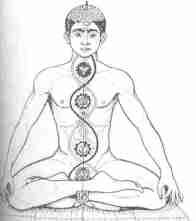 The serpents has two different colors like the two outer pillars in the Kabbalah Tree of Life, and they have the same interpretations as the Feminine and Masculine energies. Seven Lotus Flowers or Chakras, which are spiritual organs, are placed on the spine.
The serpents has two different colors like the two outer pillars in the Kabbalah Tree of Life, and they have the same interpretations as the Feminine and Masculine energies. Seven Lotus Flowers or Chakras, which are spiritual organs, are placed on the spine.
Macrocosmic Man
Left side of Man is the masculine side and the right side is the feminine side, as we see the Tree of Life from the front, the macrocosmic man.
 Chakras in the Tree of Life
Chakras in the Tree of Life
! Face looking out of paper !
The correspondence between the Chakras (see later) and the Sephirots:
- Sahasrara or the Crown Chakra, corresponds to Keter
- Ajna, the Third Eye , or the Brow Chakra corresponds to Chokmah, and the back head chakra with Binah.
- Vishuddha or the Throat Chakra corresponds to Chesed and Ta Chui, The Neck Chakra, with Gevurah.
- Ahanhata or the Heart Chakra corresponds to Tiferet
- Manipura or the Navel Chakra, where Hod corresponds to the Liver and Netzach corresponds to the Stomach
- Svadhistana or the Sacral Chakra corresponds to Yesod
- Muladhara, the base of spine, the Root Chakra, corresponds to Malkhut
From the heart and up the feminine and masculine energies are nearly in Equilibrium with the heart near the center.
 5. Chesed, 6. Gevurah, 7. Chokmah, 8. Binah, 9. Daat, 10. Kether
5. Chesed, 6. Gevurah, 7. Chokmah, 8. Binah, 9. Daat, 10. Kether
Microcosmic Man
Rudolf Steiner describes the two sides of man as being a kind of fight between Luciferic and Ahrimanic powers, where Lucifer is the masculine power (Yang) and Ahriman is the feminine power (Yin). Both described in the literature as Serpents or Dragons. Lucifer represents The Right Pillar, and Ahriman The Left Pillar. They are on Earth seen as Evil powers, but they are necessary factors in our development, as we both need the Feminine and Masculine influence, but we need to find the balance between them. From The Balance in the World and Man, Lucifer and Ahriman:
The left part of you — your left man, as it were — is the fortification set up by Lucifer, and your right man is the fortification set up by Ahriman. And the whole art of life consists in finding the true balance between them.
See also an extended Collection of Steiner texts about Lucifer and Ahriman(pdf) . The energy flows from the left side to the right side, from the Luciferic or Masculine side to the Ahrimanic or Feminine side.
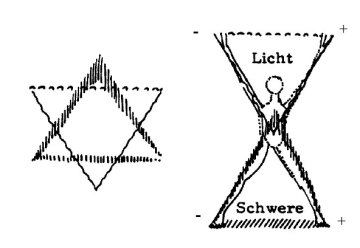 Microcosmic Man
Microcosmic Man
Crossed arms or legs shortcuts the natural streams and should be avoided, except where specified in meditative practices.
From The Kingdom of God from www.adishakti.org/
“Now this Kundalini is the power which is placed in the sacrum bone, nowhere else… And imagine this bone is called sacrum; “sacrum” means “sacred. So they knew there was something in it… This is the primule, is the germinating power within us. Now this fact has been accepted for thousands of years in India and elsewhere. For in the Bible also … they talk of the Tree of Life. That is the same as this… So this is the thing that is being described in our ancient books, in all the scriptures, even in the Qur’an they are described as Ruh, R,U,H, Ruh. “Ruh” means the “cold breeze”, the “cool breeze”. The cool breeze of the Holy Ghost is described in the Bible also.
Japanese Mitsudomoe
The Mitsudomoe represents the trinity of the Shinto religion: Sky, Man, and Earth, which is the same as the three Pillars of Kabbalah: first, second and third, or Steiners Lucifer, Christ, and Ahriman, or the Hindi Rajas, Sattva, and Tamas.
Korean Sam-Taegeuk
In Sam-taegeuk we have the same three, with red as heaven, blue as Earth, the physical world, and yellow as man.
Korean Sam-Taegeuk
In relation to Kabbalah, blue is the left pillar, yellow the center pillar, and red is the right pillar.
Bön tradition of Tibet
Bön is the oldest spiritual tradition of Tibet, and they use the same symbol as the Korean Sam-Taegeuk.
The Three Gunas
In the Aurvedic tradition the three Gunas are the three principles of the world. The “trinity”, Brahma, Vishnu and Shiva, represent the gunas, or qualities of tamas, sattva and rajas. From Brahman, Atman, Karma and Gunas
They are sattva (goodness, virtue, essence), rajas (power, passion, activity) and tamas (dullness, inertia). All earthly events, like the laws of nature, are guided by one of the three gunas or a combination thereof. There should be a balance between them for harmonious workings of the world. Disequilibria will lead to chaos, war, suffering, corruption and destruction.
The three gunas dominate People by various degrees and a way to regulate these in the body and mind is through ayurvedic cooking:
Sattvic foods :
Are fresh, juicy, light, unctuous, nourishing, sweet and tasty.
Give the necessary energy to the body without taxing it.
The foundation of higher states of consciousness.
Examples : juicy fruits, fresh vegetables that are easily digestible, fresh milk and butter, whole soaked or also sprouted beans, grains and nuts, many herbs and spices in the right combinations with other foods,…
Rajasic foods :
Are bitter, sour, salty, pungent, hot and dry.
Increase the speed and excitement of the human organism.
The foundation of motion, activity and pain.
Examples : sattvic foods that have been fried in oil or cooked too much or eaten in excess, specific foods and spices that are strongly exciting, …
Tamasic Foods :
Are dry, old, decaying, distasteful and/or unpalatable.
Consume a large amount of energy while being digested.
The foundation of ignorance, doubt, pessimism, …
Examples : foods that have been strongly processed, canned or frozen and/or are old, stale or incompatible with each other – meat, fish, eggs and liquor are especially tamasic.
Saints and seers can survive easily on sattvic foods alone. Householders that live in the world and have to keep pace with its’ changes also need rajasic energy. They ought to keep a balance between the sattvic and rajasic foods and try to avoid tamasic foods as much as possible.
Tamas is Yin or the left pillar of the Kabbalah Tree of Life, and Rajas is Yang or the right pillar, and Sattva is the equilibrium, Tao the imaginary line between Yin and Yang, the center pillar.
Hatha Yoga
The definition of Hatha Yoga, from Erin Goldman:
Yoga, as you may know, means union. Hatha is actually two words in one. Ha meaning sun and tha meaning moon. So one might say that Hatha Yoga is the union of opposites (of sun and moon). We all have “sun energy” within us. This is a masculine, active, fire energy. We also have within us “moon energy”. This is a feminine, passive, cooling energy. The practice of Hatha Yoga joins together these two opposite energies, creating a balanced individual. The combination of the words Ha and Tha in sanskrit means forceful. Thus, the practice creates a more balanced and more powerful you.
And as Ha are the masculine Sun it relates to Rajas, Yang or Lucifer and Tha the feminine Moon relates to Tamas, Yin or Ahriman, and Hatha is the equilibrium and relates to Sattva, Tao, or Christ. 
Yamas and Niyamas
In Hatha yoga there are a set of moral and ethic directives, Yamas and Niyamas, that work on the area of Ha and Tha:
The Yamas
Since Yama comes from the root word ‘yam’ ‘to hold’ or ‘to rule’, yama yoga represents the behaviours that ‘control’ certain negative tendencies (the ‘animal/instinctive nature’) that occur in all human beings. These are the five ideals of:
- Ahimsa (non-violence)
- Satya (truth)
- Asteya (non-stealing, or non-cheating)
- Brahmacharya (continence, involving self-restraint and moderation in all you do)
- Aparigraha (non-coveting, including no envy, jealousy or unhealthy competitiveness).
The Niyamas
The niyamas are the general actions that are necessary if we truly want to achieve a condition of health and deep balance within ourselves. The niyamas ask us to aim for:
- Purity (Sauca)
- Contentment (Santosha)
- Ardour (Ishawar-Pranidhana)
- Discipline (Tapas)
- And study of the Self (Svadhyaya)
Yamas is rules to discipline Tha or Yin where Niyamas are rules to discipline Ha or Yang.
 Ketu and Rahu
Ketu and Rahu
Satyam
Brhadaranyaka Upanishad 5.4.1-5.5.1:
“Clearly, that is itself, and that was just this, namely, the Satyam (the real or true) itself. ‘Brahman is the real (Satyam)’– a man who knows this immense and first-born divine being in this manner conquers these worlds. ‘Brahman is the real (Satyam)’– a man who knows this immense and first-born divine being in this manner, would he ever be conquered himself? For Brahman is simply Satyam (the real or true).
…..The gods venerated only Satyam (the real or true) , which is made up of three syllables — sa, ti, yam. Sa is one syllable, ti is another, yam is the third. The first and last syllables constitute the real, while the middle syllable is the unreal. So the unreal is trapped on both sides by the real and becomes completely united with the real. The unreal does not injure a man who knows this.”
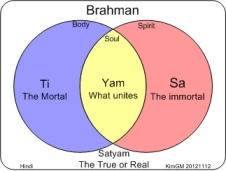
And a slightly different explanation given in Chandogya Upanishad 8.5.4:
“Now the name of Brahman is Satyam (Real or true). This word has three syllables: sa, ti, and yam. Of these, sat is the immortal, and ti is the mortal, while the syllable yam is what joins those two together. Because the two are joined together (yam) by it, it is called yam. Anyone who knows this goes to the heavenly world every single day.”
The last can be shown in western esoteric tradition as:

Incan Tradition
In the Incan tradition they have yachay, munay, and llankey which is the same as the three Pillars of Kabbalah: right, center and left pillar, or Steiners Lucifer, Christ, and Ahriman, or the Hindi Rajas, Sattva, and Tamas:
In the Andes they recognize three ways of knowing, each associated with a different part of our physical body. I have found this distinction to be very useful in organizing my thoughts about what the Andean culture has to offer and how it differs from our own. One way of knowing is through the yachay, which is located in the head. The yachay is the center of the intellect. A second way of knowing is through the munay, which is located in the heart. The munay is the center of love. And a third way of knowing is through the llankay, which is located slightly below the navel. The llankay is the center of the physical body. The Andeans take the whole of who we are as a being and differentiate it into three aspects, sometimes, for they also differentiate it in other ways as well, into two aspects (the right side and left side of the body), or some other number, depending upon the context. […] Anyway, one class of distinctions the Andeans make in our existence is between the intellect (yachay), the heart (munay), and the ability to manipulate the physical world (the llankay), we can be differentiated in other ways as well. Kenosis.
The Pentagram and the Ether Streams
Steiner describes, in “From the Contents of Esoteric Classes“, the pentagram with:
We’re always surrounded by five ether streams in the world around us on earth. They’re called earth, water, fire, air and thought ethers. These etheric streams are also active in man: earth either from the head to the right foot, from there water ether to the left hand, from there fire ether to the right hand, from there air ether to the left foot, and then thought ether back to the head. This is the occultist’s sacred pentagram, the symbol of man. Its point is directed upwards, which indicates that the spirit streams to man from the heights. The pentagram is present in many flowers and other things in nature. The sign of black magic is a pentagram with one point at the bottom, through which magicians attract bad forces from the earth and send them out of the two top horns into the environment by means of their bad will in order to use soul and nature forces for their own egotistical, evil purposes.
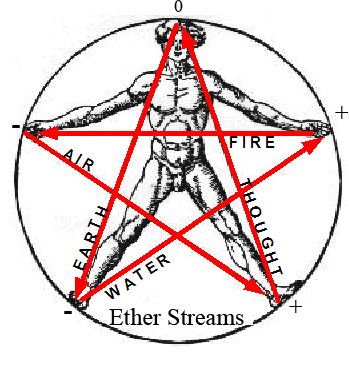
The cross sections of the five etheric streams and their connections with color, taste, and body regions are as follows:
![]() Prithivi Tattwa, earth ether, square with only the corners distinct, yellow, sweet, bones and muscles;
Prithivi Tattwa, earth ether, square with only the corners distinct, yellow, sweet, bones and muscles;
![]() Apas Tattwa, water ether, crescent moon at fifth day, white, tart, digestion;
Apas Tattwa, water ether, crescent moon at fifth day, white, tart, digestion;
![]() Teja/Agni Tattwa, fire ether, equilateral triangle, red, hot, blood;
Teja/Agni Tattwa, fire ether, equilateral triangle, red, hot, blood;
![]() Vaju Tattwa, air ether, circle, green, sour, nerves;
Vaju Tattwa, air ether, circle, green, sour, nerves;
![]() Akasha Tattwa, thought ether, two intersecting spirals — one is distinct, dark blue, bitter, lymph vessel system.
Akasha Tattwa, thought ether, two intersecting spirals — one is distinct, dark blue, bitter, lymph vessel system.
The five ether streams are called Tattwas.
And in “The Creative Cosmic Tone“
It is characteristic of it [the etheric body] that it is indeed, the architect, the creator of the physical body. Just as ice forms out of water, so does the physical body fashion itself out of the etheric body, which, like the ocean, is flooded through by many currents flowing in all directions. Among them are five main currents. When you stand with feet apart and arms outstretched, you can accurately follow the direction of these five currents. They form a pentagram. Everybody has these five currents hidden in him. The healthy etheric body appears so that these currents are, as it were, his bony framework. You must not suppose however, that everything pertaining to the etheric body is only within, because when a person moves, for instance, the currents actually go through the air. This pentagram is as mobile as a man’s physical bony framework. Thus, when the occultist speaks of the pentagram as the figure of man, it is not a matter of something that has been thought out, but rather he is speaking of it as the anatomist does of the skeleton.
Yin and Yang Meridians
Here we see the meridians of the chinese acupunkture system, with Yin as right side and Yang as left side.
The Rosicrucian Cross
The Rosicrucian Cross is the symbol for the Spiritual Stream started by Christian Rosenkreuz known under the name Rosicrucianism. The Rosicrucian Cross combines the seven Red Roses, Lotus Flowers or Chakra’s with the Cross we have seen in the Caduceus Staff or the Tree of Life of the Kabbalah. When the Roses Bloom on the cross the Chakra’s has been opened. The twelve rays are the influence of the Zodiac as the roses symbolize the planets.
In this context, the roses are Yang and the cross Yin, but together they are life, Tao or in Hindi Rajas, Tamas and Sattva.
In Steiners terminology Lucifer, Ahriman and Christ:
He who tears the roses from the black cross and has nothing left but the black cross, would fall into the clutches of Ahriman. The black cross in itself represents life when it strives to embrace inanimate matter. Also, if one were to separate the cross from the roses, keeping only the latter, one would nor find the proper thing. For the roses, separate from the cross, tend to elevate us to a life of selfish striving toward the spiritual, but not to a life in which we reveal the spirit in a material world. Not the cross alone, not the roses alone, but the roses on the cross, the cross carrying the roses: That is our proper symbol. RS
From a meditation by Steiner:
Imagine you see before you a black cross. Let this black cross be for you a symbol for the baser elements that have been cast out of man’s impulses and passions; and at the point where the beams of the cross meet, picture to yourself seven resplendent bright red roses arranged in a circle. Let these roses symbolize for you a blood that is the expression of passions and impulses that have undergone purification.
Kundalini Rising
There are three forces connected with the spine, also called Sushumna or Aaron’s rod. These are Kundalini, the serpent-fire, Ida the female force, and Pingala the male force. The Moon moves in the Ida and the Sun in the Pingala. Ida is cooling. Pingala is heating. The two serpents, around the Spine, has two different colors like the two outer pillars in the Kabbalah Tree of Life, and they have the same interpretations as the Feminine and Masculine energies. They connect Earth with the spiritual world and the spiritual world with Earth. For these to flow the Lotus Flowers, or Chakras, has to be open or running. When European esoteric talk about Initiation eastern religions talk about Kundalini Rising. The development path is described in The Eightfold Path. 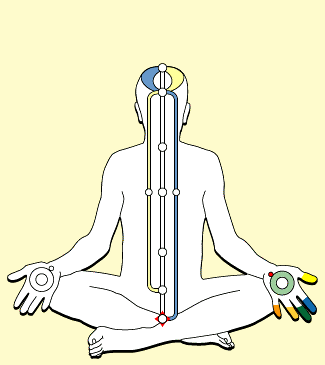
Chakras
The Chakras is known all over the world and are the spiritual organs controlling our body. The Inkas in south America know five of them, and they match the Indian descriptions.

The five ñawi (eyes) are roughly equivalent to the chakras. Kulli ñawi corresponds to the third eye, Sonqo ñawi to the heart, kunka ñawi to the throat, cosco ñawi to the navel, and siki ñawi to the root chakra.
The Chinese know them and use them in their medicine. They are the base for Astrology, and most alternative medical schools. When we are born, our Astral organs contains a picture of our Karma, which through our youth are build into the Etheric organs, and the pictures are erased from the Astral body as they are imprinted in the Etheric body. Astrology tells about Karmas influence on you, through those Etheric organs. Through your life you build your new karma in your Astral body, constantly modeling the Astral organs. When the Kundalini fires, your Astral body’s Chakras are imprinted into the Ether body, and you have now made your own Etheric organs, from the Karma you have build in this life, and is now free from the tyranny of your birth chart. The Chakras relation to our spiritual bodies are shown in a table in Dream Interpretation in Esoteric Work
Yetzer ha Tob and Yetzer ha Ra
From “An Introduction to the Study of the Kabalah” by William Wynn Westcott:
In another form of symbolism the Kabalist tells us a man has two companions, or guides; one on the right, Yetzer ha Tob, to good acts, he is from the higher Sephiroth; and one on the left, Yetzer ha Ra, encouraging the appetites and passions, temptations to evil, is an agent of Samael and of The Beast.
Man is in a very unfortunate position according to the Zohar 95 b, for it is there said that the Evil Angel joins him at birth, but the Good Angel only at the age of 13 years.
Merkabah
Merkabah, also spelled Merkava, is the divine light vehicle allegedly used by ascended masters to connect with and reach those in tune with the higher realms, symbolized with the Kabbalah. “Mer” means Light, “Ka” means Spirit, and “Ba” means Body. Mer-Ka-Ba means the spirit/body with rotating fields of light, which transports energy in our spiritual bodies, our chakras are the seven lowest of these sephira.
The four Chayot angels, Man, Ox, Lion and Eagle, represent the basic archetypes that God used to create the current nature of the world, the lower 4 sephira. They also relate to the inner planets, Earth, Moon, Venus, and Mercury.

In Alchemy
In Synergetic Qabala the relation between the Gunas and Alchemical metals are described
Alchemy is not concerned exclusively with consciousness, but also seeks the subtle transformation of the body, so that the physical level is also brought into perfect equilibrium. Thus, the alchemical metals may be considered analogous to the chakras of the yogis. We can draw another parallel among the three major principles of alchemy and those of Yoga, which are known as the Gunas. Mercury……….Sattva Sulphur………Rajas Salt……….Tamas The quality of Mercury is vital and reflective; it equates with the spiritual principles of goodness and intelligence; Sattva guna is illuminative. The quality of Sulphur is fiery and passionate like the principles of Rajas, which incites desire, attachment and action. The quality of Salt is arrestive and binding, and reflects the gross inertia of matter, which is much like Tamas. These gunas and the three alchemical substances symbolize spirit, soul and body. Another “alchemical” way the gunas were applied concerns food: sattvic foods incline one toward meditation and the spiritual life (fruits, vegetables, nuts, and grains); rajasic foods are stimulating (i.e. spicy food); tamasic food incites the baser instincts (animal flesh). The concept of four basic elements, harmonized in a fifth, is also common to both alchemy and yoga doctrines. The Indian elements are known as Tattvas. They are: Akasha (quintessence); Tejas or Agni (fire); Apas (water); Vayu (air); Prithivi (earth). Furthermore, the preparation for the practice of both alchemy and yoga requires a moral or ethical preparation. Both stress that evil tendencies should be overcome while positive virtues are developed. This includes both behavior and the purification of various body centers. The objective is not wealth, but health or wholeness. Alchemy also speaks of a “secret fire”, which is often compared to a serpent or dragon. Here again, we find the correspondence to Kundalini, the serpent-power. Alchemy is performed by the aid of Mercury, the illuminative principle, and the powers of the sun and moon. Both alchemists and Tantrics practice with the essential aid, sometimes sexual, of a mystical sister, the alchemist’s soror mystica or yogi’s yogini, complement of King/Queen, Shiva-Shakti, God/Goddess joined together in the miracle marriage. The yogic system works in three channels in the subtle body. One equates with the sun, another with the moon. They are called ida and pingala. The third, or harmonizing channel, is known as sushumna, and is associated with illumination. The twin serpents twine together and open the third way, as shown in the Cadeusus.
Paracelsus in “The life of Philippus Theophrastus Bombast of Hohenheim…” by Franz Hartmann
The Bible tells us that Man is made out of nothing ; that is to say, his spirit, the real man, is from God, who is not a thing, but the eternal reality ; but he is made into three somethings or substances,’ and these three constitute the whole of Man: they are himself, and he is they, and from them he receives all that is good or evil for him. Every state in which man can possibly enter is determined by number, measure, and weight.’ The “Three Substances” are the three forms or modes of action in which the universal primordial Will is manifesting itself throughout Nature, for all things are a Trinity in a Unity. The ” Salt” represents the principle of corporification, the astringent or contractive and solidifying quality, or, in other words, the body ; the ‘Sulphur’ represents the expansive power — the centrifugal force, in contradistinction to the centripetal motion of the first quality — it is that which “burns,” i.e., the soul or light in all things ; and the “Mercury” is the Life, i.e. that principle or form of will which manifests itself as life, or consciousness and sensation. Each of these forms of will is an individual power ; nevertheless they are substantial, for “matter” and “force” are one, and originate from the same cause. The three substances, held together in harmonious proportions, constitute health; their disharmony constitutes disease, and their disruption death.
 Steiner in Salt, Mercury, Sulphur
Steiner in Salt, Mercury, Sulphur
In olden times men did not use the abstract word think to express something that arose in the mind as a picture. When a real knower spoke about ‘thinking’ he spoke of the salt-process just described. Nor did he speak in an abstract way of the ‘will’ but of the astral forces laying hold of the airy element in man, of the sulphur-process from which the will is born. Willing was a process of concrete reality and it was said that the adjustment between the two — for they are opposite processes — was brought about by the mercury-process, by that which is fluid and yet has form, which swings to and fro from the etheric nature to the astral nature, from the fluidic to the aeriform.
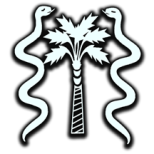 Dambala and Aida Wedo – Tahiti
Dambala and Aida Wedo – Tahiti
Body, Soul, and Spirit
In the western countries the church only work with Body and Soul, having done away with the spirit in 689. Steiner says :
Even the concept of the threefold nature of the human organism or the human being in its entirety has in a certain respect been abolished for occidental civilization by the eighth Ecumenical Council of Constantinople in the year 869. I have often mentioned this. The dogma was then established that the Christian does not have to believe in the threefold human being but only in a twofold human being.
The belief in body, soul and spirit was tabooed, and medieval theologians and philosophers who still knew a great deal about the true facts had a hard time to circumvent this truth, for the so-called trichotomy, the “membering” of the human being into body, soul, and spirit had been declared a heresy. They were compelled to teach the duality, namely, that man consists of body and soul, and not of body, soul and spirit.
and here:
Outside the circle of spiritual science, as you know, the total nature of man is thought of as consisting of but two parts, the bodily-physical and the psychic. In the realm of recognized science it is not customary nowadays to mention the spirit. Indeed, following certain premises, the result of reverting to the threefold organization of man (body, soul and spirit), as did the catholicizing Viennese philosopher, Günther, in the nineteenth century, raised scientific misgivings and also the blacklisting, in Rome, of Günther’s interesting books. This was done because as early as 869, at the eighth Ecumenical Council at Constantinople, the Catholic Church, in contradiction to both the Old and the New Testaments, had abolished the spirit. It had guided the development of dogmatism in such a way that the organization of man was permitted to comprise body and soul only. Curiously enough, this catholic development has persisted into our present science. If we seek to ascertain from history why scientists admit only body and soul we find but one reason. In the course of time the spirit has been forgotten; the habits of thought prevalent in certain circles have lost the ability to accept the spirit along with the soul of man.
This has melted soul and spirit together to one unit giving the dualistic view with body and soul as opposites, placing the bad Ego in the body and the goodly in the soul, where the Ego should be in the equilibrium in the soul between the materialistic body and the goodly spirit, we should walk the golden middle-way between the physical and the spiritual..
Literature
I have used “The Kabbalistic Sefirot and the Chakras“, and “The Chakras” by Kheper.net, and “Chakras” by Bellabenes Astralseiten (German), in preparation of this text. The Mans inner Cosmic System looks at the organs role in the body. Steiner says that the meaning of Mercury and Venus was changed in old times, so when Steiner connect Venus with the Kidneys and Mercury with the lungs, old traditions will typically do the opposite, as in Universal Healing TAO.
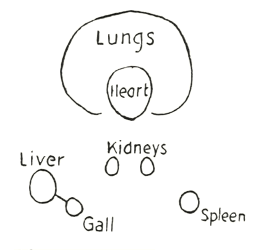
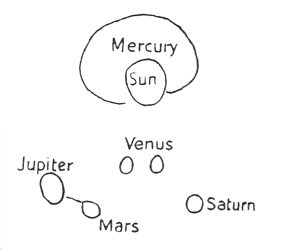
Notes on Lucifer & Ahriman, The spiritual Bodies and Initiation, and The Eightfold Path. A visually inspiring page on Chakras at Chrystal Links. In “Knowledge of the Higher Worlds And Its Attainment” Rudolf Steiner goes more in depth with the Lotus Flowers or Chakras. In “The Occult Significance of the Bhagavad Gita” Steiner looks at Sattva, Rajas, and Tamas. Kundalini Shakta by Arthur Avalon (Sir John Woodroffe). In Alchemy: Salt, Mercury, Sulphur and Alchemy: The Evolution of the Mysteries by Rudolf Steiner.
Principles of Christian Dream Interpretation
This paper is quite interesting. The Jews and Christians has thousand of years experience with dream interpretation and they accepted the spiritual world as the source of the dreams which our psychoanalysts don’t, and that limit their success in dream interpretation.
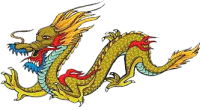
Acupuncture, Agni, Ahanhata, Ahriman, Aida Wedo, Ajna, Akasha, Akasha Tattwa, Alchemy, Anahata, Apas, Apas Tattwa, Ascendant, Ayurveda, Bön, Brahma, Brow Chakra, Chakra, Chakras, Christian Dream Interpretation, Consciousness soul, Cosco Nawi, Crown Chakra, Dambala, Ecumenical Council of Constantinople, Equilibrium, Ether Streams, Gevurah, Gunas, Hatha Yoga, Heart Chakra, Ida, Intellectual soul, Kabbalah, Ketu, Kulli Nawi, Kundalini, Kunka Nawi, llankey, Lotus Flowers, Lucifer, Macrocosmic Man, Main Articles, Manipura, Meditation, Mercury, Merkaba, Merkabah, Merkavah, Microcosmic Man, Mitsudomoe, Moon, Muladhara, Munay, Navel Chakra, Niyama, North Node, Paracelsus, Pentagram, Pingala, Prithivi, Prithivi Tattwa, Rahu, Rajas, Religion and Spirituality, Root Chakra, Rosicrucian Cross, Rosicrucianism, Rudolf Steiner, Sacral Chakra, Sahasrara, Salt, Sam-taegeuk, Sattva, Satyam, Sentient soul, Serpents, Shiva, Siki Nawi, Sonqo Nawi, Soul, South Node, Spirit, Sulphur, Sun, Sushumna, Svadhistana, Tamas, Tao, Tattvas, Tejas, Tejas Tattwa, Three Gunas, Throat Chakra, Vaju Tattwa, Vayu, Vishnu, Vishuddha, Yachay, Yama, Yang, Yetzer ha Ra, Yetzer ha Tob, Yin, Yoga
Articles
- Some Results of Initiation
- On Thinking
- On Spiritual Research
- Whats About Year 2020
- The Trap of Materialism
- The Logos Walks the Earth
- The Three Logoi in the Theosophical tradition
- The Three Logoi and the Mayan
- The Taoist Triad and the Three Logoi
- The Symbology and Meaning of AUM
- Sophia, Created in the Beginning
- The Manichean Stream, Freemasonry, Templars and the Third Logos
- The Logoi’s Creating in the Physical world and the Fibonacci Sequence
- The Soul as Truth, Beauty and Love
- All Creation Happens Through the One Becoming Two…
- The Ichthus and the Infinity Symbol
- Serpents of the Kundalini Fire
- The key to Alchemy
- The Three Spiritual Principles of the Universe
- Elementals and Nature Religions
- Esoteric History of Man
- Literature
- IF by Rudyard Kipling
- Quantum physics and Consciousness
- Christ, Manisfestation of Love
- Old Souls and Periods in Life by Peter Deunov
- The Snow Queen
- The Shambhala Warriors
- Irina Gordienko’s on Sergei O. Prokofieff
- Principles and Forms
- Heal the Kids
- Den guddommelige baggrund for forholdet mellem kvinde og mand
- Sjælen – sandhed, skønhed og kærlighed
- Pictures and diagrams
- Adam Ahanhata Ahriman Anima Animus Anthropos Anthroposophy Aristotle Astral Body Astrology Atma Atman Brahma Buddhi Chakras Christ Christian Rosenkreuz Consciousness Consciousness soul Dark Night of the Soul Dharma Dream Interpretation Ego Equilibrium Etheric body Goethe Hiram Abiff Holy Spirit Horus I AM I Ching Intellectual soul Isis Jupiter Kabbalah Karma Krishna Logoi Logos Love Lucifer Main Articles Manas Mars Materialism Mercury Moon Old Souls Osiris Rajas Religion & Spirituality Religion and Spirituality Rosicrucianism Rudolf Steiner Sattva Saturn Sentient soul Shiva Sophia Soul Sun Svadhistana Tamas Tao The First Logos The Second Logos The Third Logos The Three Logoi Twin Souls Vishnu Vishuddha Yang Yin Yin-Yang Zarathustra
- American Aboriginal Astrology Buddhism Computers Conspiracy Theories Dream Interpretation Esoterics Essenes Fairy Tales Gnostism Hinduism I Ching Indian esoteric Kabbalah Love Materialism Old Souls Politics Quantum Physics Rosicrucianism Science Teincarnations Research The Dark Night of the Soul - Metanoia The Holy Grail The Three Logoi Thinking Uncategorized Wisdom Zoroastrianism
Art
Chinese Mysticism
Enneagram
Fiction
Fractals and related subjects
German Texts
- Anthroposophie Online – Original texts in German
- AnthroWiki
- Ballabene’s Astralseiten
- Beinsa Douno (German)
- Dein Herz weiss, wer du bist…
- Die Philosophie der Freiheit
- Die Tempellegende
- Franz Hartmann
- Freie Verwaltung des Nachlasses von Rudolf Steiner
- Rudolf Steiner im Klartext
- Spiritualität, Naturwissenschaften, Anthroposophy
- Steiner Daten Bank
- Uranos Archiv – Texts in German, not found elsewhere.
Harmonics
Incan Religion
Indian Religions
Nutrition and Diets
On Materialism
Rosicrucianism
- Alchemy in Jungian Psychology
- Cosmology and Rosicrucian Symbols
- Destructive forces on Earth
- Edouard Schure: The Great Initiates
- Esoteric Christianity and the Mission of Christian Rosenkreutz
- Franz Hartmann
- Georg Wilhelm Friedrich Hegel
- Goethean Science
- Greek Color Theory and the Four Elements
- Greek Sculpture and the Four Elements
- Initiation and Its Results
- Knowledge of the Higher Worlds and How to Attain It
- Lectorium Rosicrucianum
- Manecheism, Catharism and Freemasonry
- Mystery of Janus
- Old Souls in the History of Earth
- Paracelsus by Franz Hartmann (pdf)
- Personal Christianity, the doctrines of Jakob Boehme
- Peter Deunov – Beinsa Douno
- Peter Deunov – Fundamental ideas
- Peter Deunov – The word of Beinsa Douno
- Peter Deunov – Selected Works
- Problems of Nutrition
- Rituals of Masonry and Rosicrucianism
- Rosicrucian Articles, Classic Texts, and Graphics
- Rosicrucian Texts
- Rudolf Steiner on Taming Technology
- Rudolf Steiner: From the Content of the Esoteric Classes
- S.A.KAPADIA: The Teachings of Zoroaster
- Steiner Archive
- Texts on the Three Logoi
- The Chymical Wedding of Christian Rosenkreutz
- The History of Michael
- The Inner Quest
- The Temple Legend – Introduction
- The Temple Legend – Hall
- The Temple Legend – Heindel
- The Temple Legend – Steiner
- Vidar – Archangel of the human hierarchy
- Zarathustra
Scandinavian Texts
Steiner et al
- AnthroMed Article Library
- AnthroMed Library
- Anthroposophie Online – Original texts in German
- Destructive forces on Earth
- Esoteric Christianity and the Mission of Christian Rosenkreutz
- Freie Verwaltung des Nachlasses von Rudolf Steiner
- Georg Wilhelm Friedrich Hegel
- Goethean Science
- Greek Color Theory and the Four Elements
- Greek Sculpture and the Four Elements
- Initiation and Its Results
- Knowledge of the Higher Worlds and How to Attain It
- Manecheism, Catharism and Freemasonry
- Old Souls in the History of Earth
- Problems of Nutrition
- Rudolf Steiner im Klartext
- Rudolf Steiner on Taming Technology
- Rudolf Steiner Web
- Rudolf Steiner: From the Content of the Esoteric Classes
- Spirit Alchemy
- Spiritualität, Naturwissenschaften, Anthroposophy
- Steiner Archive
- Steiner Daten Bank
- Texts on the Three Logoi
- The History of Michael
- The potentiation problem
- The Temple Legend – Introduction
- The Temple Legend – Steiner
- Uranos Archiv – Texts in German, not found elsewhere.
- Vidar – Archangel of the human hierarchy
Sufism







![kimgraaemunch [] GMail () com](https://kimgraaemunch.files.wordpress.com/2017/02/kimgraaemunch-g.png?w=210)












